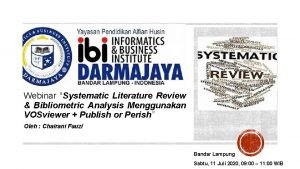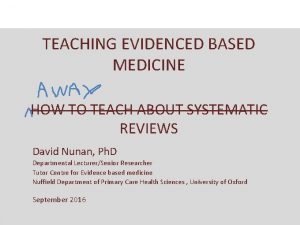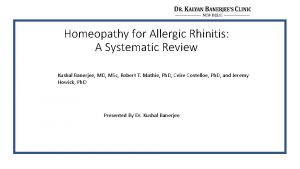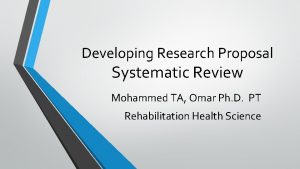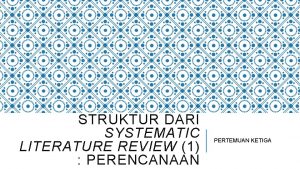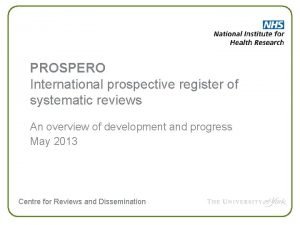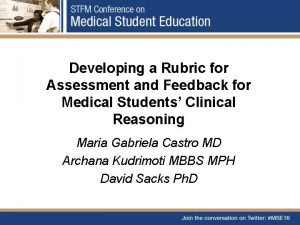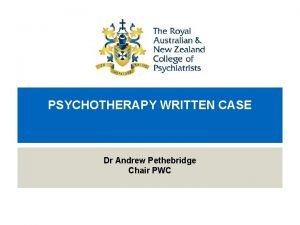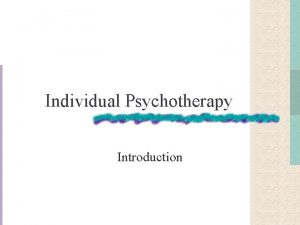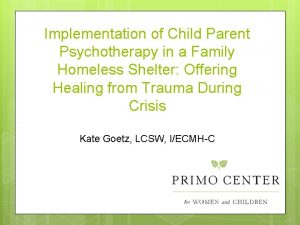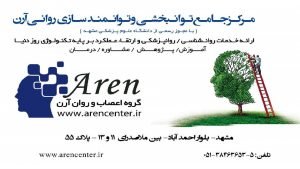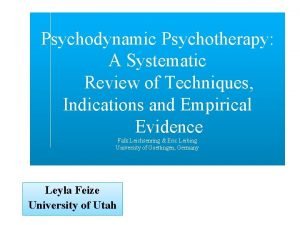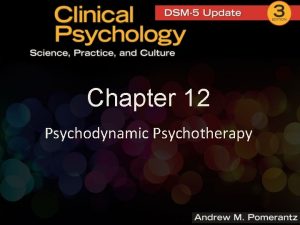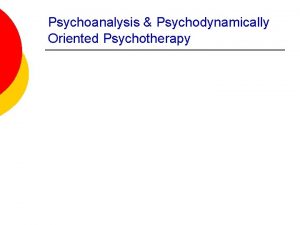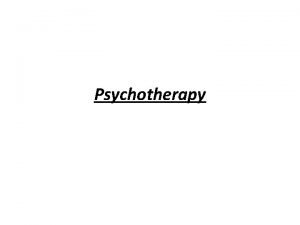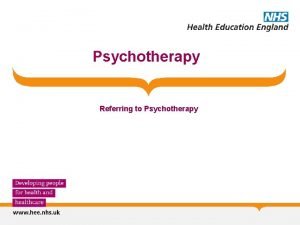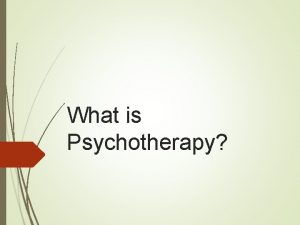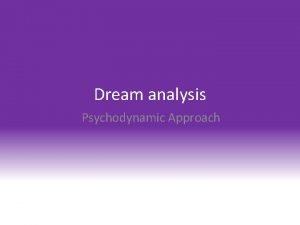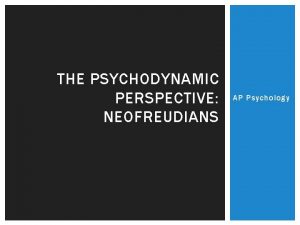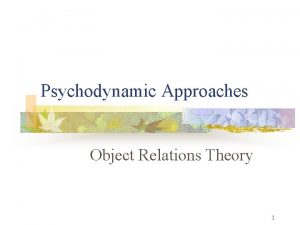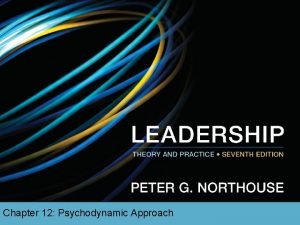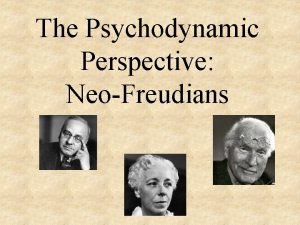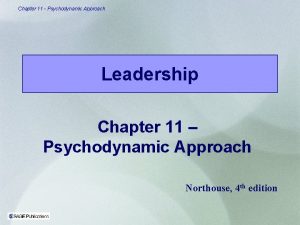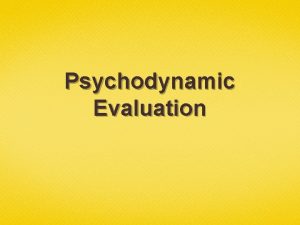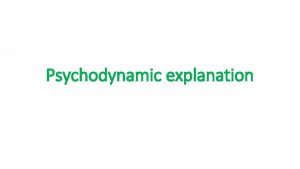Psychodynamic Psychotherapy A Systematic Review of Techniques Indications



















- Slides: 19

Psychodynamic Psychotherapy: A Systematic Review of Techniques, Indications and Empirical Evidence Falk Leichsenring & Eric Leibing University of Goettingen, Germany Leyla Feize University of Utah

Background Psychodynamic psychotherapy is the most common therapy method, but the efficacy and effectiveness of this model is controversial. The goal of this review was to search for empirical available evidence of efficacy and effectiveness of both short and long term psychodynamic psychotherapy.

Objective To review efficacy and mechanisms of short-term and long-term Psychodynamic psychotherapy with regard to empirical evidence.

Plain Language Summary Psychotherapy is an umbrella concept for treatments that operate on a continuum of supportive interpretive psychotherapeutic interventions • Patient’s insight about repetitive conflicts sustaining his/her problems. • Strengthen abilities: acute stress, not developed abilities • Transference: repetition of past experiences in present interpersonal relations Short-term psychotherapy: 7 -24 sessions Long-term psychotherapy: Several months or several years, in this review maximum 18 months. RCT’s have indicated that psychodynamic is effective Psychotherapy is as effective as cognitive- behavioral therapy

Inclusion Criteria 1 - Randomized Controlled Trials (RCTs) of psychodynamic psychotherapy in adult patients 2 - Psychodynamic psychotherapy clinical practice studies in adult patients

PRISMA Search Flow Diagram Identification: They selected 24 studies. One of them was a Cochrane review. Screening: No record of duplicated studies. No record of exclusion Eligibility: 24 articles, one record of full text article exclusion Included: 23 articles which two of them were meta -analysis.

Exclusion Criteria Long term (more than 18 months) psychoanalytic therapy was excluded

Data Synthesis 1 - Outcome of psychodynamic psychotherapy • Psychotherapeutic techniques • Therapist skillfulness • ‘Purity’ of technique • Accuracy of interpretation

Data Synthesis • Competent delivery of interpretive techniques • Patient variables: The patient’s psychological healthsickness • Interactions of technique outcome and patient variables: Transference interpretation in severely disturbed clients in shortterm psychodynamic psychotherapy results in less effective outcome and also less therapeutic alliance.

Data Synthesis 2 - Specific changes in transference patterns 3 - Helping alliance: • Patient’s group • Treatment models • Time of assessment

Data Synthesis Efficacy of short-term psychodynamic psychotherapy in the treatment of nine mental disorders: • Minor Depressive Disorders • Borderline Personality Disorder • Post Traumatic Stress Disorder (PTSD) Efficacy of long-term psychodynamic psychotherapy in the treatment of seven mental disorder: • Borderline Personality Disorder • Cluster C Personality Disorders • Social Phobia

Risk of Bias Adequate sequence generation: 23 RCT’s studies Allocation Concealment: 23 RCT’s studies Blinding: Assessing the interventions by blinded evaluators • Discrimination psychodynamic from otherapy models Incomplete outcome data : No record Free of selective reporting: Reporting of one article which did not support effectiveness of the psychodynamic psychotherapy.

Limitations 1 -No RCTs of psychodynamic psychotherapy • Panic Disorder • Obsessive-Compulsive Disorder • Narcissistic Personality Disorder 2 - The methodology of RCT’s is not appropriate for long-term psychoanalytic therapy 3 - Using different models of psychodynamic psychotherapy in the RCTs.

Results • • Psychodynamic psychotherapy is superior to control conditions Psychodynamic psychotherapy is as effective as cognitivebehavioral therapy in specific psychiatric disorders.

Results • • Long-term psychoanalytic psychotherapy is effective in treatment of multi-morbid mental disorder, large effect size was recorded. Long-term psychoanalytic psychotherapy is more effective than short-term psychoanalytic psychotherapy.

Conclusions 1 - Further research should include both efficacy and effectiveness of experimental studies. • Cost-effective treatment • Generalizing the result of one model to other models of treatment 2 - Further research should address the complex interactions among interventions, patients’ level of functioning, helping alliance and outcome.

Questions and Concerns 1 - No record of searching strategies such as database, and keywords. They only mentioned a Cochrane review for short-term psychodynamic psychotherapy. 2 - No clear inclusion or exclusion criteria, no tables. 3 - No record of any effect size: “ Long-term psychoanalytic psychotherapy is effective in treatment of multi-morbid mental disorder, large effect size was recorded. ”

Questions and Concerns 5 - Using broad and subjective terms: “outcome of the psychodynamic psychotherapy is related to skillfulness of therapists, purity of technique, and accuracy of interpretation. ” 6 - No clear explanation of comparing different models of therapy “Psychodynamic psychotherapy is as effective as cognitive-behavioral therapy in specific psychiatric disorders. ”

Reference Leichsenring, F. , & Leibing, E. (2007). Psychodynamic psychotherapy: A systematic review of techniques, indications and empirical evidence, Psychology and Psychotherapy: Theory, Research and Practice, 80, 217– 228. doi: 10. 1348/147608306 X 117394
 Nader amin-salehi
Nader amin-salehi Example of inclusion and exclusion criteria
Example of inclusion and exclusion criteria Narrative review vs systematic review
Narrative review vs systematic review Review adalah
Review adalah Qfas systematic review
Qfas systematic review Dr. kushal banerjee
Dr. kushal banerjee Prospero systematic review
Prospero systematic review Research proposal systematic review
Research proposal systematic review Contoh critical appraisal jurnal systematic review
Contoh critical appraisal jurnal systematic review Anna neary
Anna neary Pengertian systematic review
Pengertian systematic review Prospero registry
Prospero registry Systematic review in history taking
Systematic review in history taking Guidance and counseling difference
Guidance and counseling difference Andrew pethebridge
Andrew pethebridge Token economy in psychology
Token economy in psychology Types of individual psychotherapy
Types of individual psychotherapy Child parent psychotherapy triangle
Child parent psychotherapy triangle Cognitive psychology ppt
Cognitive psychology ppt Bracketing therapy
Bracketing therapy



